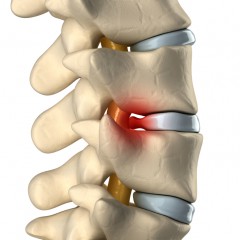 Back pain is very common, with about 80% of people reporting LBP during their lifetime. Sometimes back pain resolves on its own, however, research has shown that it is common for back pain to persist for up to a year or even longer in some cases…………..why not watch our videos at the bottom of the page?
Back pain is very common, with about 80% of people reporting LBP during their lifetime. Sometimes back pain resolves on its own, however, research has shown that it is common for back pain to persist for up to a year or even longer in some cases…………..why not watch our videos at the bottom of the page?
How can physiotherapy help?
There are lots of different types of back pain and many different types of treatment. The important thing to establish is why you have back pain and what structures are responsible. Once we have established this, we can implement a treatment program to address all aspects that may be contributing to your pain.
Treatment is likely to include:
Joint manipulation… This can be a very effective form of treatment in lots of cases and there is a growing body of evidence to help us identify which patients are likely to respond best to manipulation. These patients can be identified at assessment, and respond very well to manipulation, especially when accompanied by a home exercise program to promote flexibility and strength.
Soft tissue treatment and trigger point release… There is good evidence to suggest that myofascial or soft tissue treatment performed by a qualified practitioner is highly effective at reducing pain and promoting recovery in patients with recent and long term back pain. Often when assessing patients with back pain it is easy to feel spasm and ‘knots’ in muscle tissue. These knots are exquisitely painful, but with appropriate treatment these areas become soft and painfree. Often the longer the pain has been present the more areas of muscle spasm are present. This treatment must be accompanied by an exercise program to improve control, flexibility and strength.
Assessment of biomechanics… If there are certain activities, movements or postures that provoke your pain it is important to look at these activities in order to assess how you do them. Often if we make small adaptations to the way we move a painful activity can become comfortable. At the initial assessment by observing how you move and feeling the way your spine moves we can identify any areas of excessive stiffness or any areas that are excessively mobile. By understanding the biomechanics of movement we can help you to understand that by subtly changing the way you move it is possible to reduce the stress on painful tissue, which will result in a noticeable reduction in your pain. Sometimes we may video movements such as walking and running so they can be watched back frame-by-frame to get a really good understanding of an individuals movement patterns (see the video below for more information).
Core stability… Research into the activity of the back and abdominal muscles shows that following back pain the deep muscles are impaired. This means that they are a little slow to fire during certain activities. There has been a focus in recent years on the retraining of these muscles in order to re-educate them to fire more quickly in order to protect the spine. This program can be very effective when used in conjunction with other forms of treatment as described above and recent research suggests that a certain group of patients respond especially well to this treatment. These people can be identified at assessment.
Watch a video about our approach to treating back pain here:
Or find out more about how we use video analysis to help us solve your pain problem:



